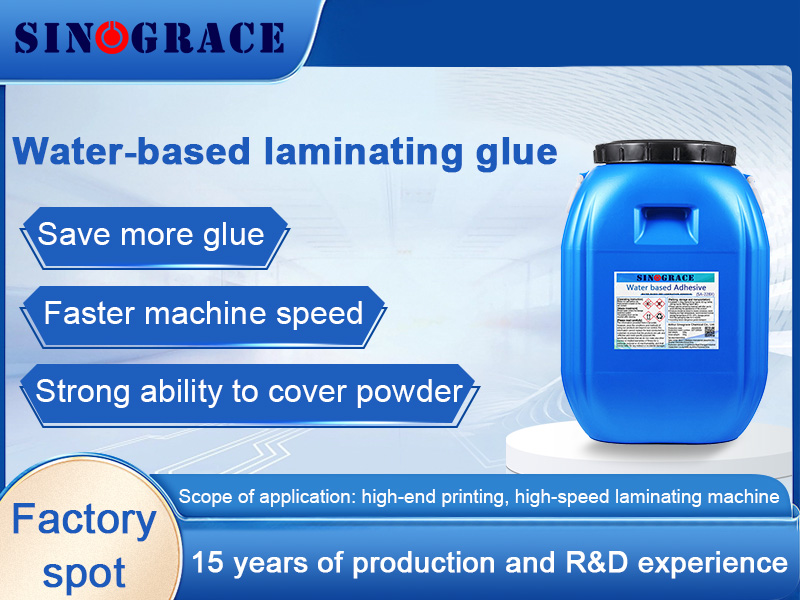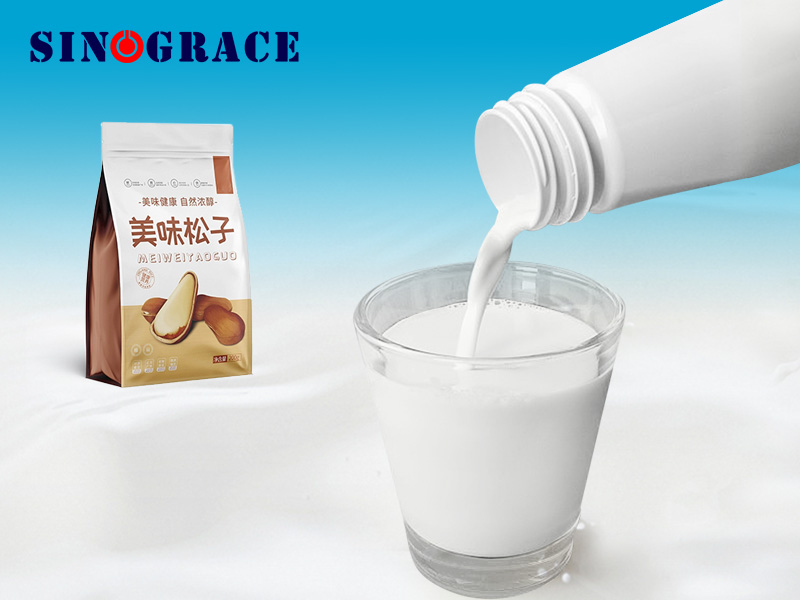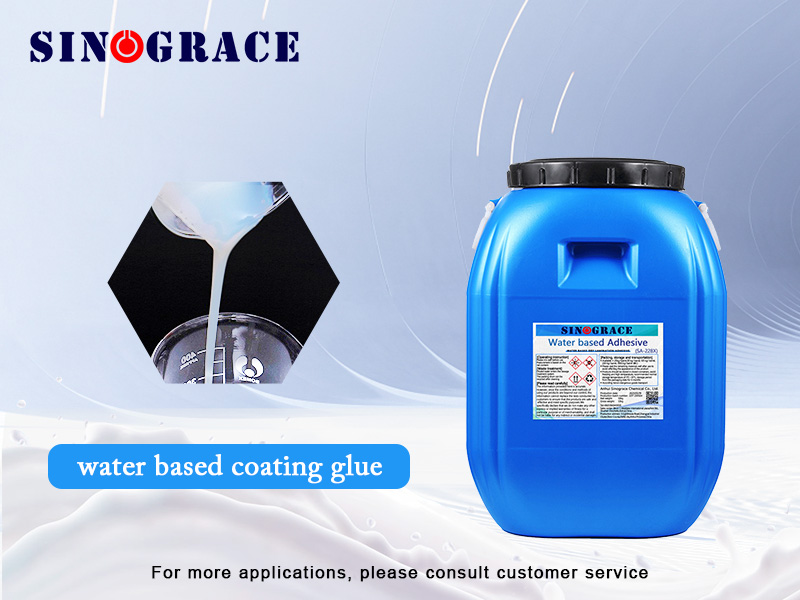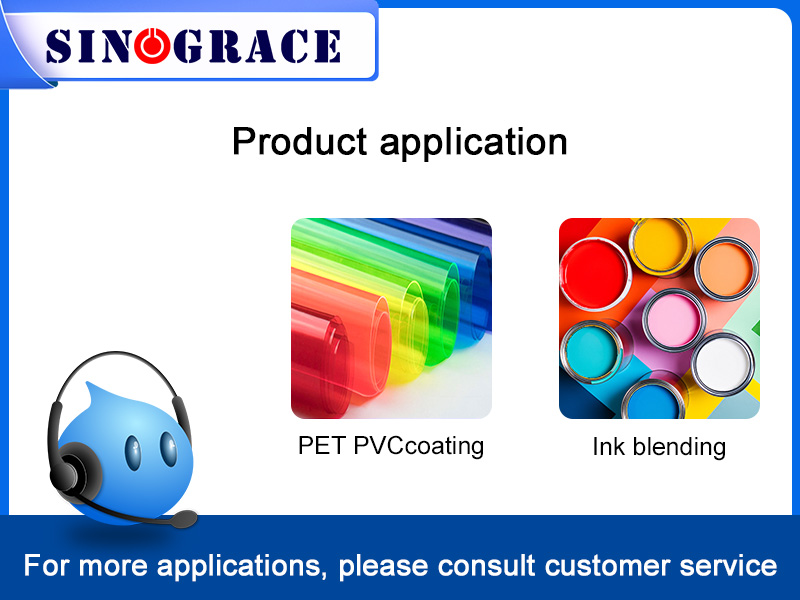
2023-10-28
One,Overview Paper-plastic composite can make the surface of paper printed matter more bright, smooth and color more bright and full of three-dimensional sense, but also play a role in moisture, anti-fouling, anti-counterfeiting, folding resistance, wear resistance and so on.It has been widely used and rapidly developed in printing and packaging industry at home and abroad. The market demand for paper plastic laminating adhesive is increasing day by day, the market is mature, and the potential is huge. Traditional paper and plastic film adhesives are mainly solvent-based film adhesives, but a large amount of solvent volatilization pollutes the environment in the process of use, and flammable and explosive storage and transportation is inconvenient, the use of large energy consumption, the use of high cost.According to the characteristics of paper-plastic composite, the use of water-based cold-paste paper-plastic composite film adhesive, non-toxic and pollution-free, low cost and no fire hazards, and has the characteristics of good brightness, no bubbles, no yellow, especially with the increasing awareness of people's environmental protection and the mandatory implementation of relevant national environmental protection policies, the development of paper-plastic composite adhesive to water-based is an inevitable trend.Paper-plastic cold-paste water-based film adhesive is also called cold-paste adhesive, cold-paste adhesive, water-based cold-paste film adhesive, etc. At present, the domestic packaging and printing industries have gradually begun to use water-based film adhesive to meet the requirements of environmental protection, and the market demand is expanding. Therefore, the production of water-based cold-paste paper plastic film adhesive is not only a mature market, easy to develop, but also has a stable and mature development prospects, social benefits and economic benefits are obvious. Second, product characteristics and application range 1.this product is suitable for bidirectional tensile polypropylene film (BOPP) polyvinegar (PET) film and a variety of color printing paper composite, can be used for old film machine, can also be used for new film machine. 2.environmentally friendly products, water-based non-toxic, non-polluting, non-combustible and non-explosive. Good brightness, no bubbles, no glue. 3.Low energy consumption, easy to use cold paste, low cost. There is no need to heat the drying channel or the composite roller when the film is laminated, and the energy saving effect is obvious 4.the use of new technology to produce products with stable quality, low cost, strong ability to eat powder, solid content of 16%~42% of the whole series of products can cover powder, consistency is easy to adjust, uniform glue, glue stability, good permeability and ink Third, product quality indicators 1.Appearance: milky white viscous liquid 2.Product performance conforms to the following table: Project Index Solid content 18~42 pH 4~7 Viscosity ...
read more
2023-10-25
Laminating water-based adhesive for flexible packaging. Suitable for thickness 30 μ Dry compounding of plastic and paper plastic within M. It is suitable for compounding between pet, BOPP, CPP, PE, aluminized film, pearlescent film and other materials, and is suitable for dry compounding machines with various speeds Features Low odor, good strength and good matching with ink Water solubility, good leveling, high transparency, yellowing resistance It can be used in one or two components Dosing Recommended coating weight: 1.6~2.0 g/m2; according to the actual conditions. It’s suggested to use anilox roller (180~220). Laminating Temperature Drying tunnel should be set to 75~80~85~95℃. Nip roller temperature: 65~75℃. Nip pressure:0.35~0.4 Mpa; In cases of not damaging the films, the pressure should be increased as higher as possible. Package Type: 50kg/bucket; 160kg/bucket Popular wide water based glue acrylic adhesive for packing laminationOr as per customer's requirement.
read more
2023-10-18
Depending on the coating material used, the type of coating is also different. PVDC coating, PVOH coating, silicon oxide (Si0x) coating, Acrylic (Acrylic) coating these four kinds of plastic coating characteristics and applications are introduced. According to the different coating materials used, plastic coating mainly has the following types: 01/PVDC coating PVDC emulsions can be coated in several ways, depending on the characteristics of the substrate and equipment conditions.In cases where precise measurement is not required, reverse roll coating is often used.In cases where more accurate coating amounts are required, air knife coating or wire winding bar coating should be used. The former has no physical contact with the substrate during the coating process and can be used at high speeds. The latter is easier to operate, but only suitable for lower speeds. According to coating online understanding, PVDC coating is generally in the range of 1.5~3.0g/㎡. A coating volume lower than the above recommended value may reduce the barrier, while a coating volume higher than the above recommended value does not necessarily improve the barrier. Can be coated on one side, can also be coated on both sides, the base material can use bidirectional stretching polypropylene film, bidirectional stretching polyester film, aluminum foil, paper, etc. A variety of different barrier films are made according to the choice of use. PVDC emulsions can be used to coat paper, cellophane, PP, PET, PE and nylon for packaging applications including fast food, cheese, meat and pharmaceuticals. PVDC coatings have excellent barrier properties and very low oxygen, odor and moisture transmittance. PVDC coating also has good heat sealing, oil resistance, solvent resistance, wear resistance, softness, gloss and flame retardant. However, the PVDC coating layer also has disadvantages, its composite material is not stable enough at low temperatures, and its substrate and finished product should be kept in a room temperature environment with a relative humidity of about 50%. 02/PVOH coating PVOH is a type of polyvinyl alcohol coated on the packaging film, which provides special oxygen barrier properties for packaging. It's very foggy. It's not yellow. It has excellent optical properties. The reverse concave roll coating method is adopted. Before PVOH coating, it is necessary to apply the primer for optimal coating strength. The PVOH coating should be included in the middle of the composite layer to protect the coating from moisture, as once damp, the oxygen barrier of PVOH will be reduced. 03/ Silicon oxide (si0x) coating The silica/silica coating on the packaging material can obtain a similar barrier property to aluminum foil. It is often referred to as a "glass" coating because silicon is the main ingredient in the manufacture of glass containers. The silicon coated film has excellent barrier property and good brightness. These coatings are intended to replace aluminum foil composit...
read more
2023-10-17
The allocation of ink hue is an important work before printing, and it is also a very abstract work.Simple color materials three primary colors, yellow, magenta, green can be deployed into red, orange, yellow, green, blue, purple and other dozens of colors. In the actual deployment process, only by the three primary colors of ink can not get the required color, this is because the ink manufacturers selected pigments, dyes simply can not meet the international standard of the three primary colors saturation, color concentration, brightness, etc., the third grade of the original color ink can only be tea gray, rather than black. Therefore, inks and auxiliaries such as black ink, white ink and diluent can not be separated from the actual color mixing process. (1)Ink mixing process 1.Master the used ink system, color, color saturation, viscosity, fineness and other indicators. 2.The sample and customer requirements, process requirements, color requirements, ink use requirements for verification, each color group color order arrangement, product print number, ink dosage, the deployment of the main tone to in-depth understanding. 3.The diluent is related to the solubility of the ink resin, the temperature deviation and the ratio of the diluent, such as the temperature is high, the diluent should be slow dry. At the same time, the dissolution effect and volatilization rate also play a very important role in the printing quality of the product, so the appropriate diluent should be selected according to the relevant conditions. 4.Preparation of ink and diluent should be done before printing. 5.In the short time of startup overprinting, it is necessary to make proper use of the original color ink according to the color match, and grasp the proportion, and adjust the hue of each color group of ink according to the proof, so that the printing speed is stable, and a little adjustment can achieve the proof effect. In normal printing, the batch control color is the same, it is more difficult for ink mixing personnel, such as the amount of diluent added to affect the color effect to different degrees, which requires ink mixing personnel to have a strong sense of responsibility. (2)Notes for mixing ink 1.In the case that the tone meets the requirements, the fewer color types of ink used, the easier to deploy and control. Can use intercolor ink do not use multi-color ink, according to the subtractive method, the more color used in the spot color ink its saturation will be lower, the black component will increase accordingly. 2.Confirm the main tone and the auxiliary tone of the printed matter, the main tone ink as the basic ink, other inks as the toning ink, the basic ink as the main ink, the toning ink as the auxiliary, so that the deployment of spot color ink will be faster and more accurate. 3.When mixing proofing and sample inks, try to use the same paper as the paper used for printing, because the color of the ink will change with the difference in paper abso...
read moreCopyright © 2015-2024 Anhui Sinograce Chemical Co., Ltd..All Rights Reserved.powered by dyyseo.com
top